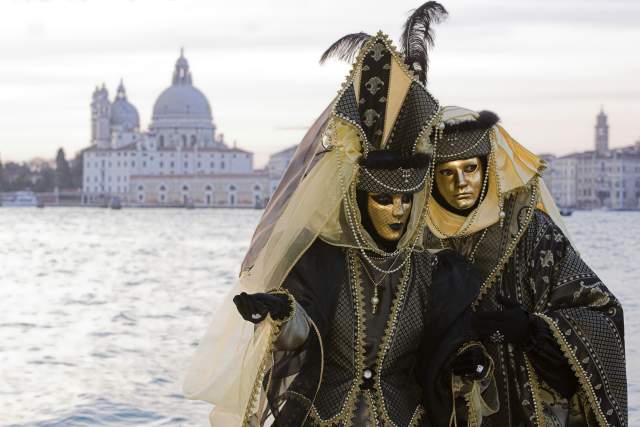Carnival Across Europe: Catch It While You Can
Carnival arrives in Europe abruptly, exploding bright and bold against the grey monochrome of late winter. While there is a delightful variation in carnival traditions across the continent, their modern origins are rooted in the Western Christian calendar. During this time of celebration, indulging in rich foods and widespread merrymaking were all once considered to be part and parcel of carnival season, which fell in late February or early March before the sombre sobriety of Lent. While the overtly religious element of the season has somewhat dimmed with the passing of the centuries, the party itself is still going strong: everyone loves a carnival and this is a round-up of Europe’s best festivities.
Venice and Cologne: The Giants of Carnival Season
When it comes to carnival kings, Venice undoubtedly takes the continent’s crown. Famed for the distinctive masks and costumes worn by participating revellers, the 2023 festivities — which began on 4 February and end on 23 February — mark the return of the city’s world-famous carnival after a three-year hiatus. Parades, processions, floats, and formal balls fill the city’s many streets, squares, and even its canals during this time, with a huge range of activities to enjoy by day and by night.

In stark contrast to the refined elegance of the Venetian carnival experience, Cologne’s “fifth season” is nothing but pure, boisterous fun. Candy, clowns, kisses, and even the cutting of ties — nothing is off-limits during Cologne’s “crazy days”. While the city’s 2023 festivities officially opened on 16 February and end on 21 February, planning for the 200th anniversary of Cologne’s carnival started on 11 November 2022 at precisely 11:11 a.m. It’s a time when nothing is taken too seriously and visitors and locals alike pack the city’s streets, pubs, and bars to do nothing more than have a good time. So pack your favourite fancy dress, get ready to shout your best “Kölle Alaaf!”, and you’re ready for carnival in Cologne.

Celebrations in Cities Large and Small
While Cologne and Venice are world-famous for their festivities, Europe has plenty of other carnival contenders. This year marks the 150th anniversary of Nice’s carnival, an occasion that is considered to be the most important winter festival on the Côte d'Azur. These two weeks of celebrations — which began on 10 February and end on 26 February — see the city’s streets fill with flower parades, floats, and the hand-crafted giant puppets that are all a beloved part of carnival in Nice. For something truly special, don’t miss what locals refer to as, ‘Berner Lou Paillassou’. The oldest tradition of the city’s carnival, this involves throwing a canvas puppet — or sometimes even a person — up into the air on a sheet and symbolises the throwing away of past worries or cares.

In the Spanish city of Cadiz, they take the build-up to carnival seriously, with carnival groups organising huge open-air food and music festivals prior to the opening of the main event, which this year began on 16 February. Along with the obligatory fancy dress, music plays a major part in the proceedings, with revellers moving through the mediaeval streets of Cadiz singing their own unique compositions. Music also forms a huge part of the carnival celebrations in the southern Dutch city of Maastricht, where brass bands park themselves on almost every corner to entertain crowds during carnival time. This year, Maastricht’s festivities run from 19 February through to 21 February, and while many local businesses close during this period, there will be multiple parades, floats, and plenty of opportunities to sample the nonnevot, the city’s traditional carnival pastry.
But if organised chaos is more your thing, Basel’s carnival is worth a consideration. In contrast to many other places around Europe, the city’s festivities begin after the start of Lent and this year, they commence on 27 February at 4 a.m. local time (yes, that’s correct). Light sleepers be aware: you will be woken before dawn by the pounding of drums and the flourish of piccolos as all the lights in the city are turned off for a lantern-lit procession by Basel’s various carnival groups, including the famous Schnitzelbank singers, who offer a humorous take on current events via the medium of song. So get up early, be sure to catch some confetti (yet another local tradition), and you’ll be ready to welcome Dame Fasnacht — as locals refer to their carnival — in true Basel style.

Just like the bright flash of a firework, carnival sparkles across the continent only to fade just as quickly. No matter what you seek from your experience — be it refined elegance, local traditions, or pure boisterous fun — Europe’s carnival traditions offer something for everyone.
Images courtesy of:

